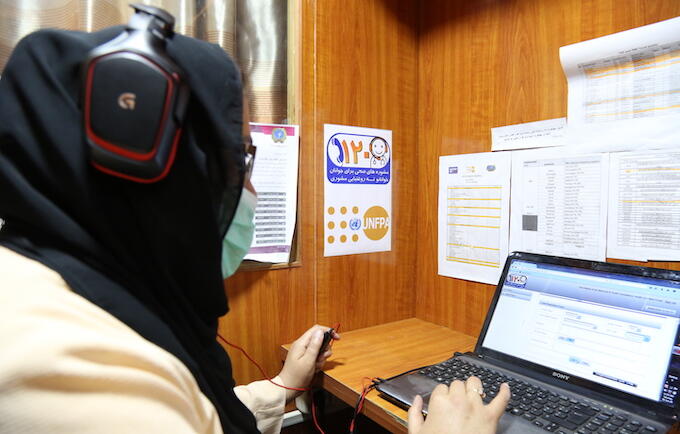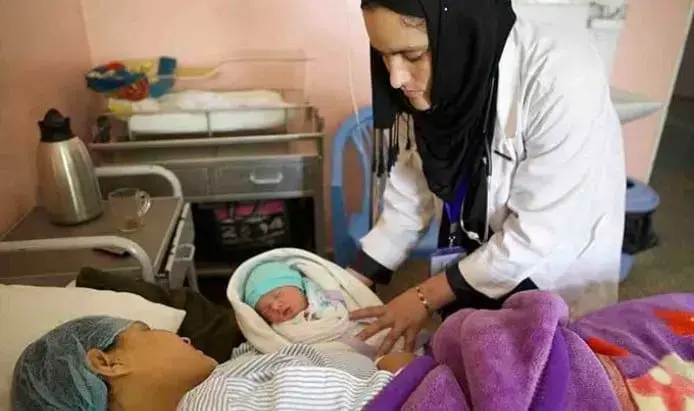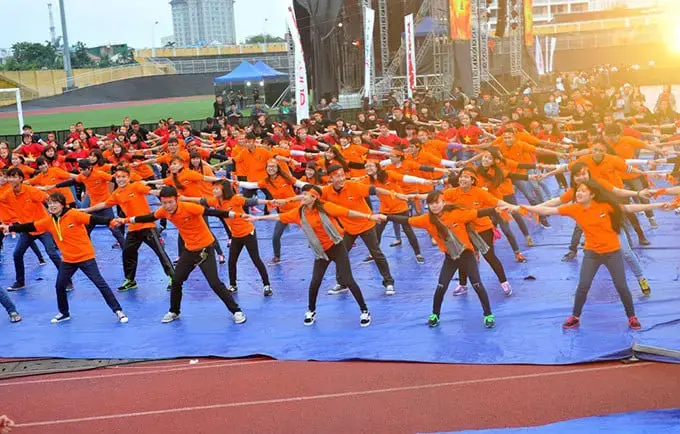Ghor Province, Afghanistan - Walking home from school one day in central Afghanistan’s Ghor province, 14-year-old Pari* noticed a strange man giving her an intrusive look. Frightened, she hurried home.
Just a few days later, Pari learnt that man was to become her husband, shattering her dreams to finish school, get a job and do something to help her middle-class family.
“My father told me to quit school because he wants to engage me to a man older than himself,” Pari told a counsellor who provides sexual and reproductive health guidance via the country’s only youth-friendly call centre for health issues, called Youth Health Line.
“The man already has three wives. My heart is broken because I do not want to marry him. Please help me, otherwise I will kill myself,” Pari pleaded, nervous and distraught.
The counsellor reassured her that together, they would find a solution.
Pari’s plight is common in Afghanistan. Despite being illegal, child marriage persists widely.
While first marriages are trending slightly later in life, still, almost half of women ages 25 to 49 were married by their 18th birthday, and almost 15 percent by their 15th birthday. That’s one in seven girls—nearly six times higher than the rate for 15-year-old boys.
COVID-19 will only intensify the socioeconomic conditions that lead to this severely harmful practice. Disruptions to programmes working to keep girls from marrying early, combined with the catastrophic economic fallout of the pandemic, are expected to cause a drastic spike in the number of child brides the world over. An estimated 13 million new child marriages could occur globally over the next decade—one of the pandemic’s many tragedies.
In Afghanistan, that means substantially more girls will be forced into marriages before they are psychologically or physically ready. This deteriorates girls’ health, and it dissolves their educational opportunities and thus their ability to contribute to the economy. Ultimately, child marriage undermines any chance of girls reaching their full potential.
When married as children, girls usually drop out of school. They also endure frequent and often non-consensual sexual relations. That, combined with insufficient family planning information and services, leads to early and frequent childbearing, often before girls’ bodies are mature enough for a safe delivery.
This is evident in the fact that adolescent mothers, 15-19 years old, accounted for 7 percent of births in Afghanistan between the years 2015 to 2020. That is almost twice the average adolescent birth rate among other South Asian countries, of which Afghanistan has the second highest rate after Bangladesh.
Moreover, an estimated 531 girls and women 15 to 19 years of age in Afghanistan die in childbirth for every 100,000 who survive. That’s almost twice as many maternal deaths compared to women who give birth just five years later. And a quarter of women with obstetric fistula, a complication of delivery that leaves women with painful and ostracising health problems, were below the age of 16 when they married.
Child brides also face increased risk for gender-based violence, mental health issues and suicide, maternal death and disability.
Very often Afghan parents marry their daughters off for economic reasons—usually to significantly older men—as part of business deals and to settle debts, or to collect money from a wealthier family. Other times, child marriages are arranged to strengthen relationships with rival families and tribes. In these instances, the value of girls is boiled down to that of a tradable commodity.
Parents also marry their daughters while they are still young in hopes of protecting their virginity and safety, unaware of the ensuing lifetime of harm. But even this can be economically driven, as virginity is perceived to ensure girls’ honour, and thus their marriageability.
In all cases, girls are robbed of the ability to exercise their human rights and make decisions governing their own bodies and lives. Underpinned by persistent gender inequality, patriarchy and cultural norms, these decisions are made by men without the consent of their daughters; even mothers typically have little or no say.
Unfortunately that was the case for Pari, who with the Youth Health Line counsellors, decided to speak with someone her father trusts.
“The next time Pari called, she put her mother on the phone,” the counsellor described. “But through the course of our conversation, we realised she would not have the influence needed to sway the decision. So our next step was to try speaking with Pari’s father directly.”
At first he refused, but after many calls, Pari convinced him to talk with the Youth Health Line counsellors.
“She will waste her time going to school,” Pari’s father told them, citing the poor quality of education in their area, where agriculture is the predominant industry and poverty the primary reason for child marriages. “Early marriage also protects girls from dirty external environments, and since they have to be married, it is better to do it as soon as possible. The situation in our country is very bad and I can die any time, so it is better for my daughter to get married while I’m still alive.”
Empathetic to his views, the Youth Health Line counsellors shared a different perspective he may not have considered. They described the damaging impacts of early marriage to Pari, both mentally and physically.
“We told him that when one person in the Nikah—an Afghan wedding—does not want to marry, it’s not accepted under Islamic law,” the counsellor recounted. “And we explained the positive impact of his daughter’s education on her future.”
Pari’s father was not aware of these issues. He eventually promised to think about his decision.
A few days later, Pari called the Youth Health Line again, but this time she was very happy.
“After speaking with you, my father changed his decision and now I am going to school!”
Learn more about harmful practices in “Against My Will,” UNFPA’s flagship State of the World Population Report 2020, launched June 30.
Take an in-depth look at the drivers, consequences and ways forward to end child marriage, female genital mutilation, son preference and gender-biased sex selection once and for all.
* Name changed to maintain confidentiality





